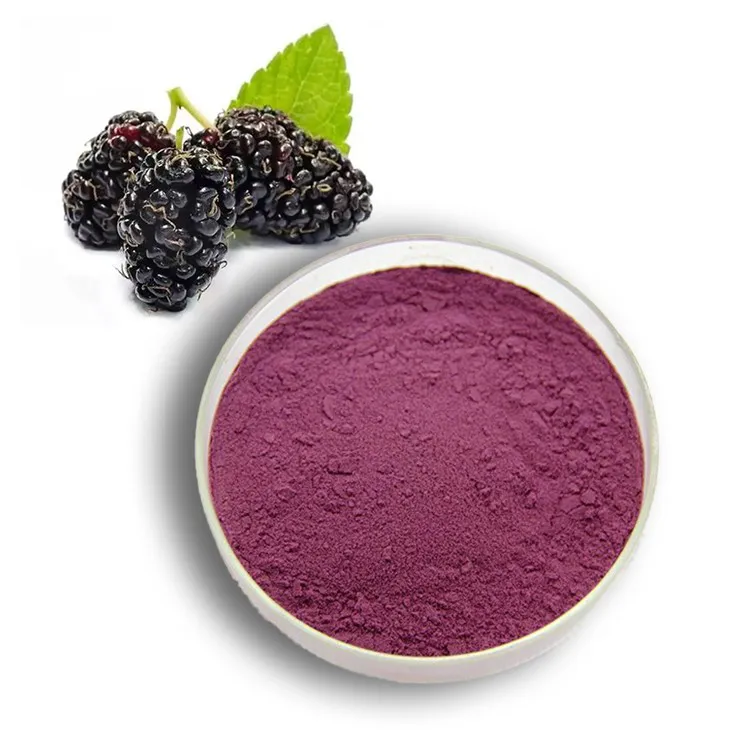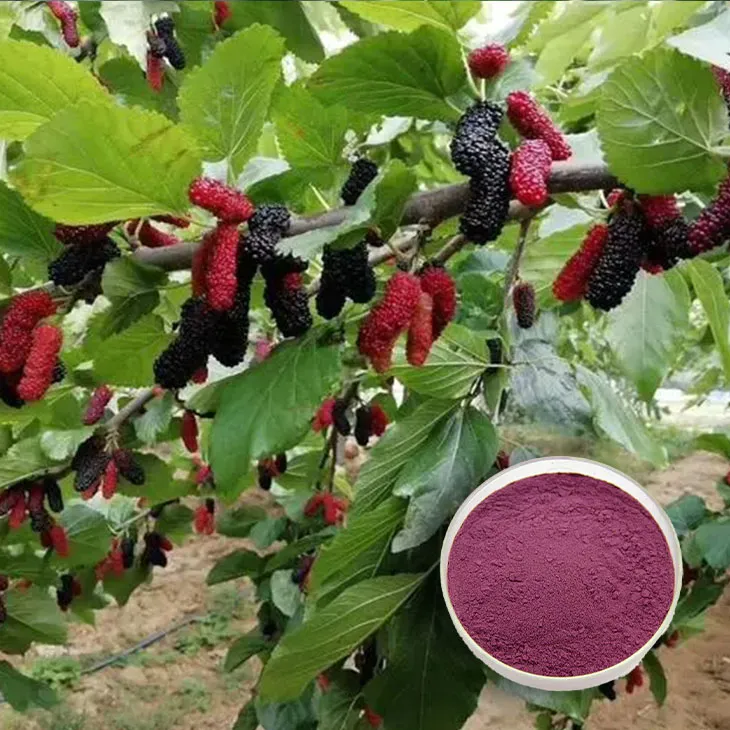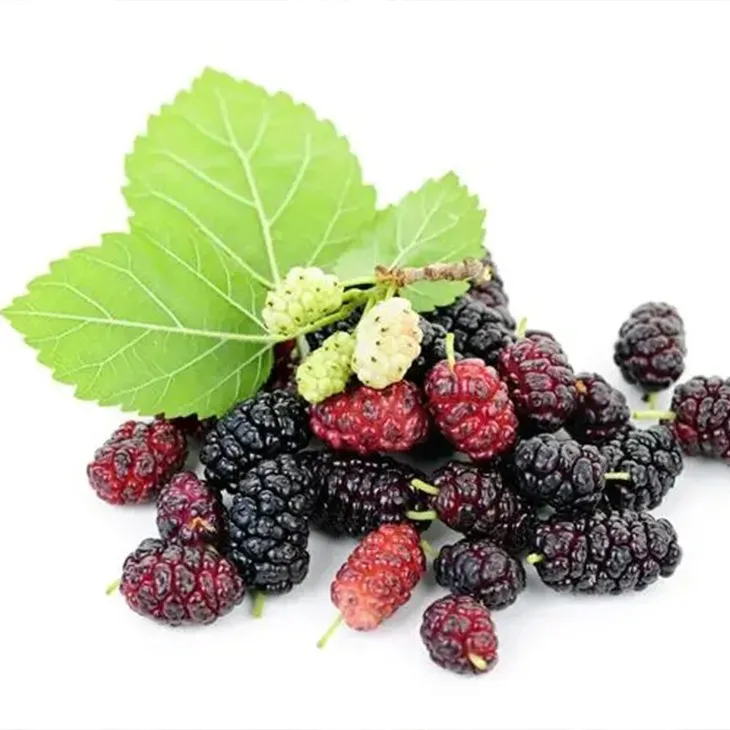- 0086-571-85302990
- sales@greenskybio.com
Mulberry Extract: China vs. the United States
2024-11-30

1. Introduction
Mulberry Extract, also known as sang - shen extract, has been gaining increasing attention in both China and the United States for its potential health benefits. However, due to differences in historical, cultural, and scientific backgrounds, there are significant differences in the way the two countries approach this natural extract. This article aims to comprehensively compare the origins, extraction techniques, quality control, potential health benefits, and market trends of Mulberry Extract in China and the United States.

2. Origins of Mulberry in China and the United States
2.1 China
China has a long - standing relationship with mulberries. Mulberries have been an important part of Chinese traditional medicine for centuries. In ancient China, mulberries were not only used for food but also for medicinal purposes. They were often mentioned in traditional medical classics. Mulberries are native to China and are widely distributed across different regions, especially in the south and east. The long - term domestication and cultivation history have led to a rich variety of mulberry species in China.
2.2 United States
In the United States, mulberries were introduced later compared to China. They are mainly used for landscaping and some limited agricultural purposes. Some species of mulberries were brought to the United States from other parts of the world. Although not as deeply integrated into traditional medicine as in China, the United States has gradually recognized the potential value of mulberries in recent years, especially from a scientific research perspective.

3. Extraction Techniques
3.1 China
China's extraction techniques of Mulberry Extract often draw on traditional methods with modern improvements. Traditional Chinese medicine extraction methods such as decoction and soaking have been passed down for a long time. In modern times, these methods have been combined with advanced extraction technologies like supercritical fluid extraction and ultrasonic - assisted extraction. For example, in some traditional Chinese medicine factories, ultrasonic - assisted extraction is used to improve the extraction efficiency of mulberry extract while maintaining the integrity of its active ingredients. This method can effectively extract components such as flavonoids and polysaccharides from mulberries.
3.2 United States
The United States mainly adopts modern scientific extraction techniques. Research institutions and pharmaceutical companies in the United States often use high - tech equipment and strict experimental procedures for extraction. For instance, chromatography techniques are commonly used to purify and isolate the active ingredients in mulberry extract. This enables them to obtain highly pure and well - characterized extracts for further research and development. Moreover, they focus on standardizing the extraction process to ensure the reproducibility of the extract quality.

4. Quality Control
4.1 China
China has established a series of quality control standards for mulberry extract based on traditional medicine experience and modern scientific research. These standards cover aspects such as raw material selection, extraction process monitoring, and final product quality inspection. For example, in raw material selection, only high - quality mulberries are allowed to be used as raw materials. During the extraction process, strict control is carried out on parameters such as temperature, pressure, and time. In the final product inspection, various indicators such as the content of active ingredients and heavy metal residues are tested. However, due to the large number of small - scale producers in China, there may be some challenges in ensuring the consistent implementation of these quality control standards across the industry.
4.2 United States
In the United States, quality control of mulberry extract is mainly regulated by strict regulatory agencies such as the Food and Drug Administration (FDA). The FDA has clear regulations on the safety and quality of dietary supplements, which include mulberry extract. The production process must comply with Good Manufacturing Practice (GMP) standards. This requires manufacturers to ensure strict quality control from raw material procurement to final product packaging. For example, strict tests are carried out on the identity, purity, and potency of the extract. In addition, the United States also has a relatively complete traceability system to ensure that any quality problems can be traced back to the source.
5. Potential Health Benefits
5.1 China
In Chinese traditional medicine, mulberry extract is believed to have multiple health benefits. It is considered to have effects on nourishing the liver and kidney, improving eyesight, and moistening the lungs. For example, for people with liver and kidney deficiency, mulberry extract may help improve their physical condition. In modern scientific research in China, it has also been found that mulberry extract has antioxidant, anti - inflammatory, and hypoglycemic effects. Some studies have shown that the flavonoids in mulberry extract can scavenge free radicals in the body, thereby reducing oxidative damage. And its polysaccharides may have a certain regulatory effect on blood sugar levels.
5.2 United States
In the United States, scientific research on the potential health benefits of mulberry extract is mainly focused on its role in diabetes management, cardiovascular health, and anti - aging. Some pre - clinical and clinical studies have suggested that mulberry extract may help improve insulin sensitivity and regulate blood glucose metabolism, which is beneficial for diabetic patients. In terms of cardiovascular health, it may help reduce blood lipid levels and prevent the formation of atherosclerotic plaques. Regarding anti - aging, the antioxidant properties of mulberry extract are considered to play a role in delaying cell aging and protecting against age - related diseases.
6. Market Trends
6.1 China
In China, the market for mulberry extract is growing steadily. With the increasing popularity of traditional Chinese medicine and the recognition of natural health products, mulberry extract is widely used in the fields of health care products, traditional Chinese medicine preparations, and food additives. In the health care product market, mulberry extract - based products are often promoted for their functions such as improving eyesight and nourishing the body. In traditional Chinese medicine preparations, it is an important ingredient in some prescriptions for treating liver and kidney diseases. However, due to the relatively large number of competitors in the market, the price competition is also relatively fierce.
6.2 United States
In the United States, the market for mulberry extract is mainly in the form of dietary supplements. As consumers' awareness of health and natural products continues to increase, the demand for mulberry extract - based dietary supplements is also on the rise. These supplements are often targeted at people with specific health concerns such as diabetes and cardiovascular diseases. In addition, some high - end beauty and anti - aging products also start to incorporate mulberry extract due to its potential anti - aging properties. However, compared to China, the market size of mulberry extract in the United States is still relatively small at present, but it has great growth potential.
7. Conclusion
In conclusion, mulberry extract in China and the United States shows differences in various aspects such as origins, extraction techniques, quality control, potential health benefits, and market trends. China, with its rich traditional medicine heritage, has a long - term exploration and application history of mulberry extract. The United States, on the other hand, approaches it from a more modern scientific research perspective. Both countries can learn from each other's experiences. China can further strengthen scientific research and standardize production processes based on its traditional advantages, while the United States can explore more traditional medicine applications of mulberry extract. Through cooperation and exchange, it is expected that the development and utilization of mulberry extract can be promoted more effectively in both countries, bringing more health benefits to global consumers.
FAQ:
1. What are the main origins of sang - shen extract in China?
In China, sang - shen extract mainly comes from native mulberry plants. These mulberry trees have been cultivated for a long time in various regions. They are carefully selected for extraction due to their traditional medicinal value recognized in Chinese medicine for centuries.
2. How does the United States approach the extraction of sang - shen extract?
The United States approaches sang - shen extract extraction from a modern scientific research perspective. This may involve advanced laboratory techniques, strict standardization of extraction processes, and a focus on isolating specific bioactive compounds. They often use high - tech equipment to ensure the purity and consistency of the extract.
3. What are the differences in quality control of sang - shen extract between China and the United States?
In China, quality control of sang - shen extract may be based on traditional medicine standards as well as modern pharmacopoeia requirements. It may involve aspects such as the origin of raw materials, traditional processing methods, and compliance with national drug quality standards. In the United States, quality control is mainly centered around strict scientific research - based standards. This includes strict testing for contaminants, accurate measurement of active ingredients, and compliance with FDA regulations.
4. What are the potential health benefits of sang - shen extract?
The potential health benefits of sang - shen extract may include antioxidant properties, which can help fight against free radicals in the body. It may also have potential benefits for blood sugar regulation, as some studies suggest it could affect insulin sensitivity. Additionally, it might have anti - inflammatory effects, which could be beneficial for various health conditions.
5. How are the market trends of sang - shen extract different in China and the United States?
In China, due to its long - standing traditional medicine usage, sang - shen extract may have a relatively stable market demand in the field of traditional medicine and health products. In the United States, the market trend may be more influenced by scientific research findings. If new research discovers significant health benefits, the market may experience rapid growth, mainly in the sectors of dietary supplements and alternative medicine.
Related literature
- Sang - shen Extract: Traditional and Modern Perspectives"
- "Comparative Analysis of Botanical Extracts: China and the US Case"
- "The Science behind Sang - shen Extract in Different Regions"
- ▶ Hesperidin
- ▶ citrus bioflavonoids
- ▶ plant extract
- ▶ lycopene
- ▶ Diosmin
- ▶ Grape seed extract
- ▶ Sea buckthorn Juice Powder
- ▶ Beetroot powder
- ▶ Hops Extract
- ▶ Artichoke Extract
- ▶ Reishi mushroom extract
- ▶ Astaxanthin
- ▶ Green Tea Extract
- ▶ Curcumin Extract
- ▶ Horse Chestnut Extract
- ▶ Other Problems
- ▶ Boswellia Serrata Extract
- ▶ Resveratrol Extract
- ▶ Marigold Extract
- ▶ Grape Leaf Extract
- ▶ blog3
- ▶ blog4
-
The best olive leaf extract in nature.
2024-11-30
-
Cordyceps extract suppliers.
2024-11-30
-
Chinese aguaje extract powder manufacturers.
2024-11-30
-
Honeysuckle pollen of the best quality.
2024-11-30
-
Chinese Senna Leaf Extract Suppliers.
2024-11-30
-
Organic Dandelion Root Extract, Australia.
2024-11-30
-
The best bitter gourd extract in 2024.
2024-11-30
-
The best baicalin in nature.
2024-11-30
-
Cat Claw Extract
2024-11-30
-
Hops Extract
2024-11-30
-
Dandelion Leaf Extract
2024-11-30
-
Black Garlic Extract
2024-11-30
-
Angelica sinensis extract
2024-11-30
-
Bamboo Leaf extract
2024-11-30
-
Cranberry Extract
2024-11-30
-
Jujube Extract
2024-11-30
-
Grape Leaf Extract
2024-11-30
-
Sugarcane Extract
2024-11-30





















